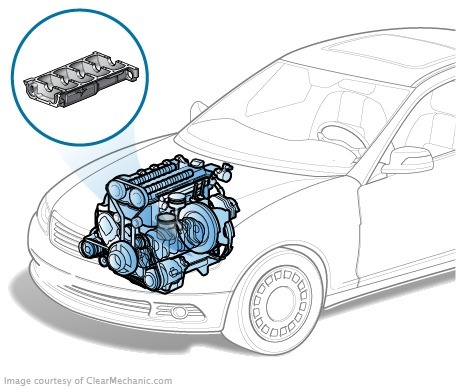
No matter how sophisticated the modern technology is, it is not yet possible to make a totally hermetic pair of friction a mirror of the cylinder-piston ring. Therefore, when the internal combustion engine is operating in the oil pan, the combustion products of the air-fuel mixture are downloaded.
Doctor of Technical Sciences, A. Hagahen-Smith of the Pasadena Institute of Technology found that uncharted crankcase gases by car engines are the main component of the city's smog.
The crankcase gases enter the pan through the non-densely adjacent cylinder wall piston rings, reduce the useful life of the oil, degrade the heat from the cylinders and create excess pressure on all seals in the block. The system for recycling crankcase gases is helping to escape excessive pressure in the crankcase.
Development of a system for recycling crankcase gases
The system looked just as if it was a crankcase that produced gas in the atmosphere, polluting it. However, over time, vehicle emissions standards have become much stricter, and the manufacturer may face a ban on the sale of the model in a given country. In view of these requirements, a closed ventilation system, known as "crankcase recycling system", has been developed.
How the system of recycling crankcase gases works
In a modern closed system, gases do not emit the atmosphere-they are sent back to the engine, which in this case acts as an "arsonist". The other end is attached to the intake manifold, through which it enters the combustion chamber. A portion of the gases is burned at the time of the fuel outbreak and the remainder is emitted into the atmosphere through the exhaust system. A fraction of the gases will be reintroduced into the engine's crankcase. Thus, the process is running continuously, with some positive dynamics.
Recycling device
In the upper part of the crankcase there is an oil separator in the form of a box. It contains a Masloreflector with the task of maximizing the release of the crankcase gases from the oil of the "sun-borne" oil. The box of the oil separator has the output for the crankcase ventilation duct. A forced crankcase ventilation valve is installed on the gas path. For normal engine operation, the flow in the crankcase shall always be maintained at a certain level and the valve shall be calibrated for three response options.
Forced ventilation valves and operating modes
Option 1. A very low pressure of 500 ...-700 mBar is being created in the throttle space, which is unacceptable for the ventilation system. At these moments the valve of the valve under the discharge of the valve is flouting the valve, breaking the springs.
Check the valve at idle by removing the filler cap and putting a piece of paper up and down, repeating the motion of the membrane
Option 2. When the throttle is fully opened, the pressure is equal to or greater than atmospheric pressure, say, when running the turbine engine, and can reach + 500,700 mBar. In this case, the pressure shall close the valve for the gas pass.
Option 3. At normal pressure, the piston occupies the middle position, the removal of crankcase gases is stable.
This can be verified as follows: the sheet of paper "shall be joined" to the filler oil throat when the speed is increased to 2000-3000 rpm.
Crankcase ventilation valve
When the engine is running at high speed, when the intake manifold is subjected to a pressure equal to or greater than atmospheric pressure, the gas flow into the crankcase is increased. If there is a turbocharger in the intake, the vacuum is too large and it needs to be balanced. For these purposes a pressure relief valve, which is triggered by discharge of the intake manifold at the time of opening of the valve, shall be used. The valve mechanism is inserted into the plastic body with input and output connections and consists of two cavity, membranes and springs.
Pressure relief valve operation
When the dilution is within the norm, the valve spring is not loaded, the membrane is raised, and the crankcase gases may pass freely through an open connection.
The need to supply the engine with [ [ crankcase ventilation]] has been established by law since 1961
When the pressure is too low, the diaphragm begins to go down, overcoming the spring, and closes the main output. At this point, the crankcase gases shall be directed through a bypass channel, calibrated to a specified gate.
Side effects of the recycling system
However, solving one problem, the system of recycling crankcase gases creates another. In spite of the oil separator, the Gases, which are removed from the pan, take away particles of oil in the form of oil mist, which gradually contaminates the intake system. This causes the engine to malfunction. In addition, the oil particles are deposited on the inside surface of the gas-outlet channels and the elements of the recycling valve. The bypass flow of the channels decreases over time and leads to the failure of the recycling valve, which may result in a disruption to the injection operation, up to the complete failure of the injection valve. The diaphragm rise in the diaphragm increases the oil flow. In such cases, the valve shall be replaced.
If hoses that are recommended to be replaced with the recycle valve are not replaced in time, their natural ageing occurs, leading to cracks and breaks. When oil stains are introduced in the engine compaction area, the increase in oil and fuel consumption, as well as the unstable operation of the engine, it is better to use the service to diagnose engine systems and recycling systems in particular to avoid costly repairs in the future.







